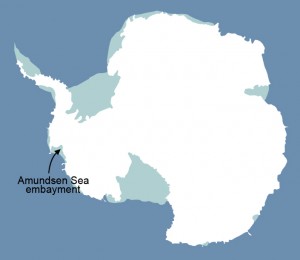1. Australia targeted as climate change obstacle
I pointed out that Australia is the dunce of the class on climate change according to the Climate Change Performance Index 2015.
Elsewhere the French are already considering how to cope with Australia’s and Canada’s negativity at the Paris conference next December.
2. Seeney in denial on sea level rise
That dipstick Jeff Seeney, Deputy Premier in Queensland, has directed the Moreton Council to remove all reference to sea level rise from, its planning documents:
“I direct council to amend its draft planning scheme to remove any assumption about a theoretical projected sea level rise from all and any provision of the scheme.”
The council had made provision for a possible 0.8-metre rise in sea level by the year 2100. Seeney says:
“I am prepared to protect the property rights of Queenslanders in other council areas should this issue arise again.”
Who is going to protect them from him? The Local Government Association of Queensland (LGAQ) is seeking legal advice.
Seeney claims the issue has nothing to do with climate change! Denial doesn’t come clearer than that!
3. West Antarctic melt rate has tripled
A NASA study has done a thorough analysis of the land ice melting in the Amundsen Sea Embayment where the glaciers are melting faster than any other area of Antarctica.

The rate of loss accelerated an average of 6.1 gigatons per year since 1992, but now the rate is increasing by 16.3 gigatons per year.
The total amount of loss averaged 83 gigatons each year over the whole period, that’s the equivalent of losing the weight of Mt Everest (not just the ice on it) every two years.
4. Warmer seas could cause faster melting of Antarctic ice
A separate study has found that the seas around Antarctica are warming, which could increase ice shelf melting.
Ice shelves float, so the melting does not cause sea level rise, but they buttress the land glaciers. Take away the ice shelves and the glaciers flow faster.
5. New large scale battery storage in Germany
Belectric and Vattenfall have opened new large-scale battery energy storage system at the Alt Daber solar power plant in Germany. The facility uses lead-acid batteries.
For the system to be economical without any financial support, costs will have to come down by around a third.
6. Solar and wind energy backed by huge majority of Australians
Solar and wind energy enjoy strong support from the Australian public, with 80% of people putting them both among their top three energy choices in a poll for the Australia Institute.
By contrast, coal and coal seam gas were chosen by 35% and 38% of those polled as being among the best three future energy sources.
A separate review of medical literature by the Australia Institute debunked the fear that wind power damaged people’s health, finding “no credible evidence” directly linking exposure to turbines with negative health effects.
Nine out of 10 people said they wanted more solar energy.
Six in 10 people said they were concerned about the impact of coal and coal seam gas on the landscape.
7. UNSW researchers set world record in solar energy efficiency
Solar researchers working at the University of New South Wales (UNSW) claim to have produced a system that converts over 40 percent of incoming sunlight into electricity, thereby taking the title of highest solar efficiency for a photovoltaic system ever reported.
“This is the highest efficiency ever reported for sunlight conversion into electricity,” said UNSW Professor Professor Martin Green, Director of the Australian Centre for Advanced Photovoltaics (ACAP).
8. The end of coal as we know it
And oil for that matter.
Graham Readfearn in Lima at the climate Conference of Parties has found these items in the negotiating text:
Parties’ efforts to take the form of:
a. A long-term zero emissions sustainable development pathway:
Consistent with emissions peaking for developed countries in 2015, with an aim of zero net emissions by 2050; in the context of equitable access to sustainable development;…
Consistent with carbon neutrality/net zero emissions by 2050, or full decarbonization by 2050 and/or negative emissions by 2100;….
He understands they were put there by Norway, the Marshall Islands, Sweden and the AILAC grouping of countries consisting of Chile, Colombia, Costa Rica, Guatemala, Peru and Panama.
Andrew Robb Bishop have noticed and are complaining. It will be interesting to see whether the statements stay.
Readfearn finds that a move for a zero emissions target is growing and Malte Meinshausen explains that it is inevitable if we are serious about staying within two degrees.

